Requirements to photographs when drawing up identity documents to citizens of the Republic of Kazakhstan Printable version
Last update: 21.12.2021To ensure proper quality of identity documents and identification of a person using photo image biometric data, photographs submitted for documents should comply with the requirements stated below.
Presented samples of photographs demonstrate the required quality parameters of photo images and serve to determine suitability of submitted photographs to print identity documents. A photograph should be made no later than 6 months prior to documents submission.
Photographs should be made by photo printing from one negative image on thick photographic paper showing full face on light background with neutral countenance and mouth closed. It is not allowed to use photographs made through computer scanning, modelling or copying. Besides, it is also not allowed to submit photograph of a person in uniform.
No headwear is allowed when taking a photograph with exception to cases when headwear is worn due to religious or medical reasons. In this case, a face should be open from a lower point of chin to forehead and there should be no shadows from a headwear on a face.
A photograph size should be as follows: height 45 mm, width 35 mm. A photo should clearly depict facial features from lower point of chin and up to crown of the head, and also from far-left line of face to the right one. Face should occupy 70-80 % of photograph, which makes 32-36 mm from lower point of chin to crown of the head.
In case if a person has thick hair, height from lower point of chin to crown of the head should correspond to the stated requirements. If it is difficult to determine the highest point of head than it is allowed that height would be no less than 27 mm and no more than 40 mm. If there is too much hair volume, a head (including hairdo) should be fully depicted on a photograph while size of face should not be less than parameters stipulated by the requirements.
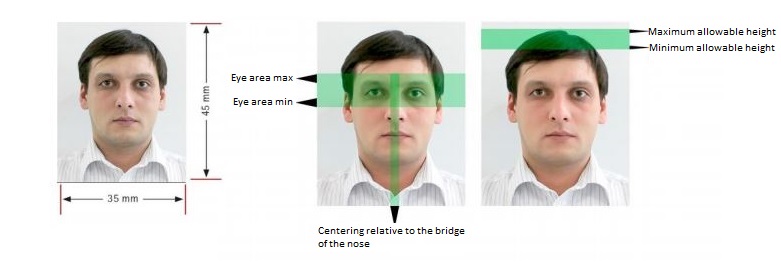
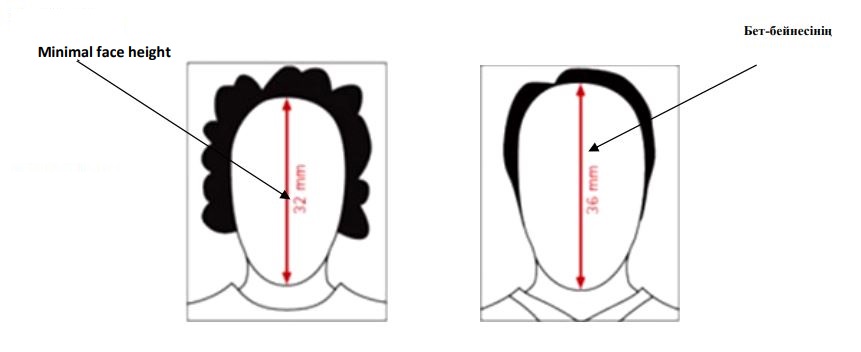
ERRORS WHEN TAKING PHOTOGRAPHS
1. ACUTANCE AND CONTRAST
- A photograph should be contrastive and vivid.
- All facial features should be depicted clearly.
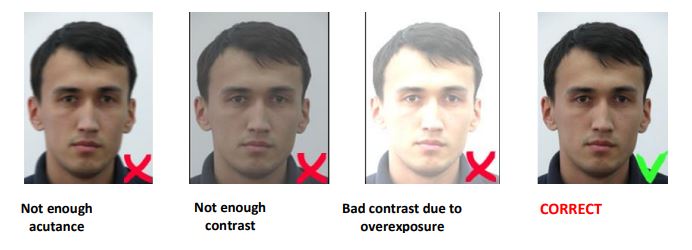
2. ILLUMINATION
- When taking a photograph, illumination of face should be even.
- Avoid lightening or darkening of certain areas of a face, as well as the effect of red eyes.
- Illumination should be in natural colour; colour such as blue or red is not allowed.
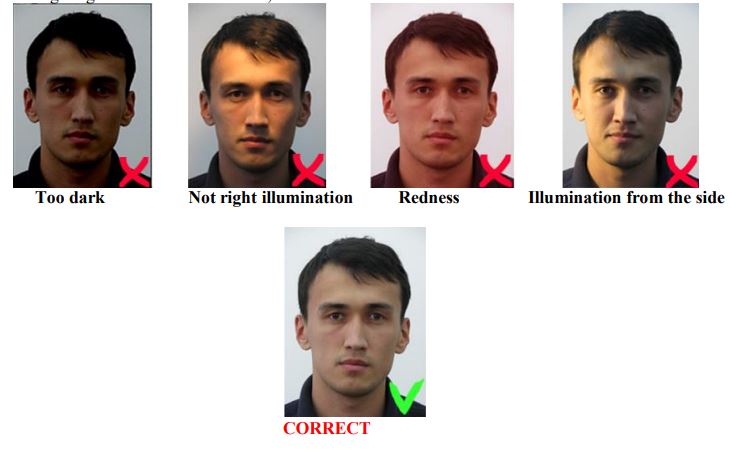
3. BACKGROUND
- The background should be sole coloured and light, it is recommended to use a gray background, it is not recommended to use a blue background.
- A face and hair should contrast with the background and stand out clearly from it. If a person has light hair, then the background should be medium tones of gray, and if it is dark, then light gray. No drawings and patterns are allowed on the background.
- A photo should only contain an image of person being photographed (no unauthorized persons or objects are allowed). There should also be no shadows.
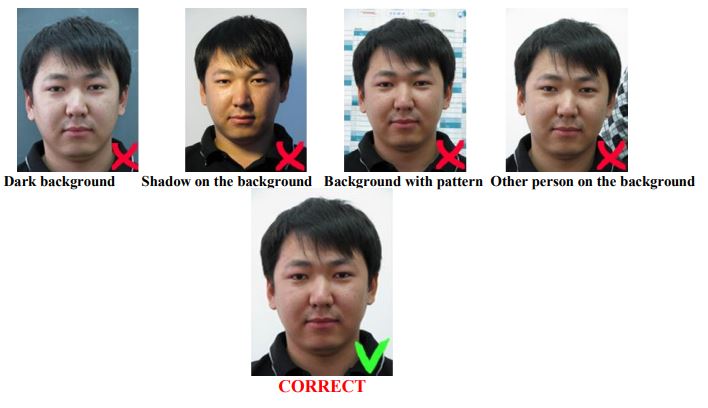
4. PHOTOGRAPH QUALITY
- Photo parameters: 3,5*4,5 cm, 413*531 (pixels); size: up to 30 KB; depth: 24 bits.
- A photo (especially when taken with a digital camera) should be printed (in case of being printed on a paper sheet) on high-quality matte paper with a minimum resolution of 300 dpi.
- A photo should contain neutral colours and convey a natural skin tone.
- There should be no bends, dirt or scratches on a photo. Art retouching and other manipulations are not allowed.
- A lens should correspond to a short telephoto lens of 90-130 mm relative to a camera.
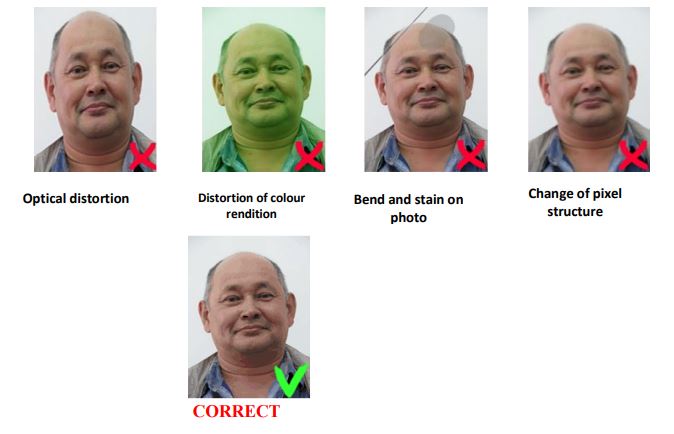
5. POSTURE AND COUNTENANCE
- No head bends and rotations are allowed (for example, photo with half-profile).
- A person should look straight into a camera, have neutral countenance and closed mouth. A person should not narrow his/her eyes or gawp.
- A picture is made from the front, not from ahead, from below or sideways.
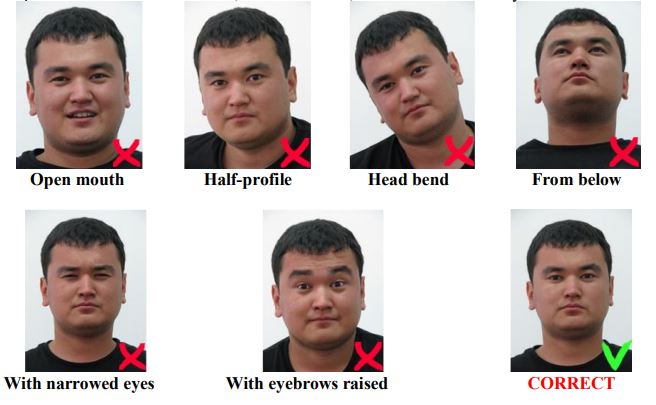
6. DIRECTION OF GAZE
- A person should look straight into a camera.
- Eyes should be open and clearly visible. They should not be hidden by hair.

7. GLASSES
- Eyes should be clearly visible. No light reflections and sunglasses are allowed.
- Exception is only provided for an eyeshade due to medical reasons. Eyeglass frame should not hide eyes.
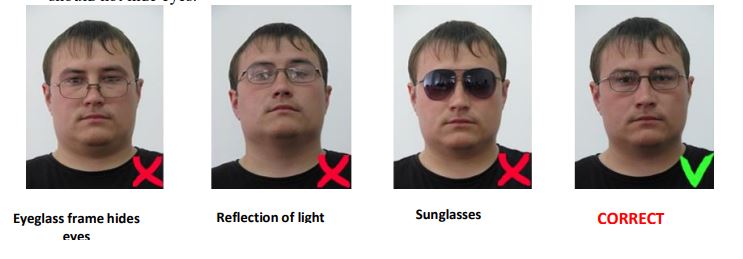
8. HEADWEAR
- No headwear is allowed when taking photographs.
- Exception is only allowed if headwear is part of religious believes. In this case, a face should be open from lower chin line up to forehead.
- Shadows from headwear are not allowed.
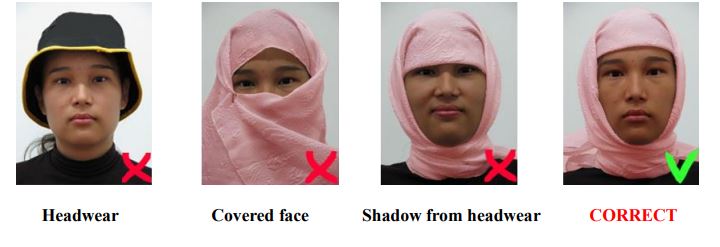
9. CHILDREN
The following standards apply to children:
- face should occupy 50-80 % of photograph, i.e. 22-36 mm from lower point of chin to crown of the head;
- if a child has thick hair, mind that distance from the lower point of chin to crown of the head should comply with requirements;
- if it is hard to determine the highest point of head than it is allowed that height would be no less than 17 mm and no more than 40 mm.
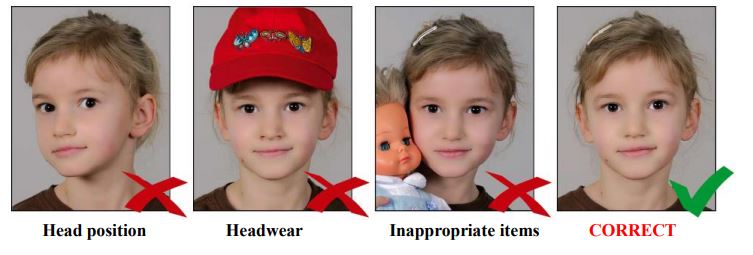
10. CHILDREN UNDER 6 YEARS OLD
- This section stipulates deviations from the rules for taking photographs of children in the "Children" section for children under 6 years old, regarding the position of the head (the requirements for the frontal position of the head and shoulders remain valid), countenance, eyes, direction of gaze , as well as regarding the location of a face in the center of a photo.

All the requirements to photographs were developed pursuant to ICAO international standard.




